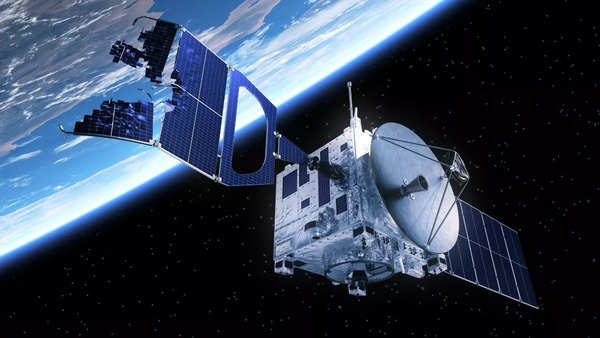Artificial satellites can indeed fall back to Earth, and when they do, it can be a dramatic event.Satellites are kept in orbit by a delicate balance between their velocity and Earth’s gravitational pull. However, over time, factors such as atmospheric drag can cause their orbits to decay, leading to re-entry into the Earth’s atmosphere.

Representative image
One notable example occurred on April 1, 2018, when China’s Tiangong-1 space station re-entered the Earth’s atmosphere. Launched in 2011, Tiangong-1 was China’s first prototype space station. It was initially intended to be deorbited in a controlled manner, but contact was lost in 2016, leading to an uncontrolled re-entry. The space station burned up upon re-entry, with some debris falling into the South Pacific Ocean.
When a satellite re-enters the Earth’s atmosphere, it encounters intense friction, causing it to heat up and often break apart. Most of the satellite’s components burn up during this process, but some larger pieces can survive and reach the Earth’s surface. The likelihood of these pieces causing harm is relatively low, as they often fall into oceans or uninhabited areas. However, there have been instances where debris has landed near populated regions.
In 1979, NASA’s Skylab space station re-entered the Earth’s atmosphere after six years in orbit. The 77-tonne station broke apart, and debris scattered over the Indian Ocean and sparsely populated areas of Western Australia. No injuries were reported, but the event captured global attention. The Shire of Esperance in Australia even fined NASA $400 for littering, a fine that was eventually paid by a radio station in California.
Another incident occurred in 2001 when Russia’s Mir space station was deliberately deorbited. After 15 years in space, Mir was guided to re-enter the atmosphere over the South Pacific Ocean. The controlled re-entry ensured that the debris fell into a remote area, minimizing any risk to human life or property.
The increasing number of satellites and space debris in orbit has raised concerns about the potential risks of uncontrolled re-entries. In 2020, a piece of a Chinese Long March 5B rocket re-entered the atmosphere and landed in the Ivory Coast, causing damage to buildings but no injuries. This incident highlighted the need for better tracking and management of space debris.
To mitigate these risks, space agencies and companies are developing technologies for controlled re-entries and debris removal. For example, the European Space Agency’s ClearSpace-1 mission, scheduled for launch in 2025, aims to capture and remove space debris using a robotic arm. Additionally, satellites are increasingly being designed to burn up completely upon re-entry, reducing the chances of debris reaching the Earth’s surface.
While the risk of being hit by falling space debris is low, it is not negligible. In 1997, Lottie Williams from Tulsa, Oklahoma, became the only person known to have been struck by space debris. She was hit on the shoulder by a piece of a Delta II rocket, but fortunately, she was not injured.
As the number of satellites in orbit continues to grow, the importance of responsible space management becomes ever more critical. Efforts to track, control, and mitigate space debris will play a vital role in ensuring the safety of both space operations and life on Earth.
Houthis Fire Ballistic Missiles At Israel After Hodeidah Port Attack; Warning Sirens Sound In Eilat

